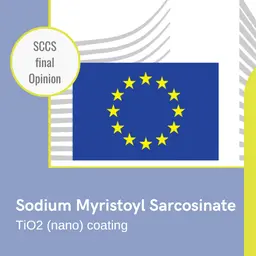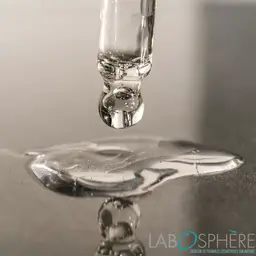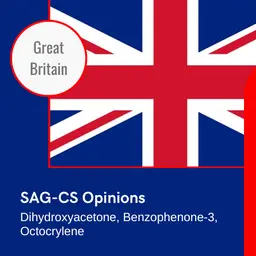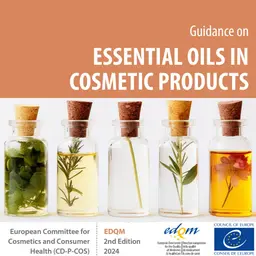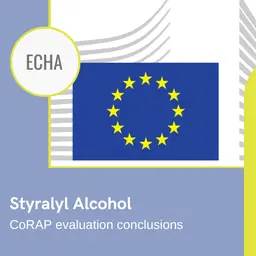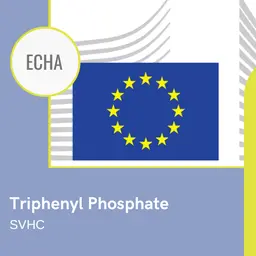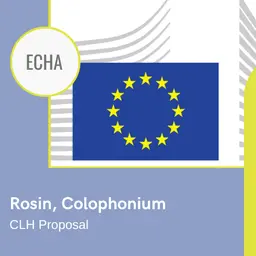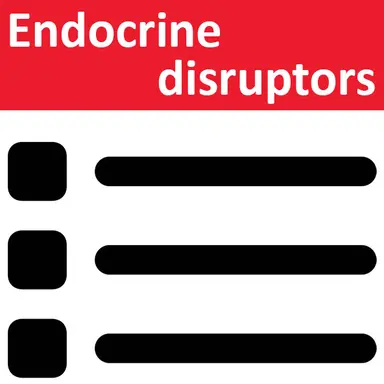
The European Commission having concluded that the framework of Regulation 1223/2009 was sufficient to manage the risk that endocrine disruptors may represent in cosmetics, one might be tempted to bury their heads in the sand and ignore the fact that there can be a problem. But we also know that some substances suspected, and sometimes strongly suspected, of being so are still under evaluation. There is no doubt a number of consumers and associations representing them will increasingly target them – and that an equally high number of formulators would have scruples using ingredients that may have deleterious effects on the people that will use the products they develop. As a result, everyone can be tempted to avoid them, in particular by targeting the substances already proven to act or strongly suspected of acting as endocrine disruptors.
Endocrine disruptors can be found in a wide range of consumer products. The list below only covers those that can be used in cosmetics and does not include substances already listed in Annex II to the Cosmetics Regulation (prohibited ingredients).
It was drawn up by crossing several sources:
• Work done by IPCP (an international group of experts in chemical pollution) and initiated by the UN
• list published by the European Commission
• Call for data from the European Commission on endocrine disruptors
• CoRAP programme for 2019-2021 and CoRAP programme for 2020-2022
• The Endocrine Disruptor Lists Website
Known or suspected endocrine disruptors
| INCI | CAS | FUNCTION | STATUS |
|---|---|---|---|
| Acetylcedrene | 32388-55-9 | Perfuming | Not regulated |
| Acetyl hexamethyl tetralin |
1506-02-1 21145-77-7 |
Masking |
Annex III/182 Forbidden in oral products Maximum authorised concentration: • Leave-on products: 0,1%, except: hydro alcoholic products: 1%, fine fragrance: 2.5%, fragrance cream: 0.5% • Rinse-off products: 0,2 % |
| Benzophenone | 119-61-9 |
Masking UV absorber |
Not regulated |
| Benzophenone-1 | 131-56-6 | UV absorber | Not regulated |
| Benzophenone-2 | 131-55-5 |
Masking UV absorber |
Not regulated |
| Benzophenone-3 | 131-57-7 |
UV absorber UV filter |
Annex VI/4 Maximum authorised concentration: 6% Other condition: Not more than 0.5% to protect product formulation |
| Benzophenone-4 | 4065-45-6 |
UV absorber UV filter |
Annex VI/22 Maximum authorised concentration: 5% (as acid) |
| Benzophenone-5 | 6628-37-1 |
UV absorber UV filter |
Annex VI/22 Maximum authorised concentration: 5% (as acid) |
| Benzotriazole | 95-14-7 | Antimicrobial | Not regulated |
| Benzyl salicylate | 118-58-1 |
Perfuming UV absorber |
Annex III/75 The presence of the substance must be indicated in the list of ingredients when its concentration exceeds: • 0.001% in leave-on products • 0001% in rinse-off products |
| BHA | 25013-16-5 |
Antioxidant Masking |
Not regulated |
| BHT | 128-37-0 |
Antioxidant Masking |
Not regulated |
| Butylparaben | 94-26-8 |
Masking Preservative |
Annex V/12bis Maximum authorised concentration: • 0.14% (as acide) • 0.8% for mixtures of parabens, the individual concentration of Butylparaben not exceeding 0.14% |
| t-Butyl methyl ether | 1634-04-4 | Solvent | Not regulated |
| Butylphenyl methylpropional | 80-54-6 | Perfuming |
Annex III/83 The presence of the substance must be indicated in the list of ingredients when its concentration exceeds: • 0.001% in leave-on products • 0001% in rinse-off products |
| Cyclomethicone |
69430-24-6 556-67-2 541-02-6 540-97-6 |
Antistatic Emollient Hair Conditioning Humectant Solvent Viscosity Controlling |
Not regulated |
| Cyclopentasiloxane | 541-02-6 |
Emollient Hair Conditioning Skin Conditioning Solvent |
Not regulated |
| Daidzein | 486-66-8 | Skin Conditioning | Not regulated |
| Deltamethrin | 52918-63-5 | Not reported | Not regulated |
| Dibromocyanoacetamide | 10222-01-2 | Antimicrobial | Not regulated |
| Ethylhexyl methoxycinnamate | 5466-77-3 |
UV absorber UV filter |
Annex VI/12 Maximum authorised concentration: 10% |
| Ethylhexyl salicylate | 118-60-5 |
UV absorber UV filter |
Annex VI/20 Maximum authorised concentration: 5% |
| Ethylparaben | 120-47-8 | Preservative |
Annex V/12 Maximum authorised concentration: • 0.4% (as acid) for single ester • 0.8% (as acid) for mixtures of esters |
| Genistein | 446-72-0 | Skin Conditioning | Not regulated |
| Hexamethylindanopyran | 1222-05-5 | Perfuming | Not regulated |
| Homosalate | 118-56-9 |
Skin Conditioning UV absorber UV filter |
Annex VI/3 Maximum authorised concentration: 10% |
| Isoamyl p-methoxycinnamate | 71617-10-2 |
UV absorber UV filter |
Annex VI/14 Maximum authorised concentration: 10% |
| Kojic acid | 501-30-4 | Antioxidant | Not regulated |
| MEK | 78-93-3 |
Perfuming Solvent |
Not regulated |
| 4-Methylbenzylidene camphor |
36861-47-9 38102-62-4 |
UV absorber UV filter |
Annex VI/18 Maximum authorised concentration: 4% |
| Methylparaben | 99-76-3 | Preservative |
Annex V/12 Maximum authorised concentration: • 0.4% (as acid) for single ester • 0.8% (as acid) for mixtures of esters |
| Nitrophenol |
88-75-5 100-02-7 554-84-7 25154-55-6 |
Hair Dyeing | Not regulated |
| Octocrylene | 6197-30-4 |
UV absorber UV filter |
Annex VI/10 Maximum authorised concentration: 10% |
| Propylparaben | 94-13-3 |
Perfuming Preservative |
Annex V/12bis Maximum authorised concentration: • 0.14% (as acide) • 0.8% for mixtures of parabens, the individual concentration of Propylparaben not exceeding 0.14% |
| Resorcinol | 108-46-3 |
Antioxidant Denaturant Hair Dyeing Perfuming |
Annex III/22 Maximum authorised concentration: • As an oxidising colouring for hair dyeing: 5% • In hair lotions and shampoos: 0.5% Other condition: Not to be used to dye eyelashes or eyebrows |
| Salicylic acid | 69-72-7 |
Antidandruff Agent Hair Conditioning Agent Keratolytic Agent Antiacne Agent Masking Denaturant Preservative Skin Conditioning Agent Fragrance Ingredient |
Annex III/98 Maximum authorised concentration: • Rinse-off hair products: 3% • Other products: 2% Other condition: Not to be used in preparations for children under 3 years of age, except for shampoos Annex V/3 Maximum authorised concentration: 0.5% Other condition: Not to be used in preparations for children under 3 years of age, except for shampoos |
| Thiabendazole | 148-79-8 | Antimicrobial | Not regulated |
| Triclocarban | 101-20-2 |
Deodorant Preservative |
Annex III/100 Forbidden in leave-on products Maximum authorised concentration in rinse-off products: 1.5% Other condition: Purity criteria - 3, 3’, 4, 4’-Tetrachloroazobenzene<=1ppm; 3, 3’, 4, 4’-Tetrachloroazoxybenzene<=1ppm Annex V/23 Maximum authorised concentration: 0.5% Other condition: Purity criteria - 3, 3’, 4, 4’-Tetrachloroazobenzene<=1ppm; 3, 3’, 4, 4’-Tetrachloroazoxybenzene<=1ppm |
| Triclosan | 3380-34-5 |
Deodorant Preservative |
Annex V/25 Maximum authorised concentration: • Toothpastes, hand soaps, body soaps/shower gels, deodorants (non-spray), face powders and blemish concealers, nail products for cleaning the fingernails and toenails before the application of artificial nail systems: 0.3% • Mouthwashes: 0.2% |
| Trimethylbenzoyl diphenylphosphine oxide | 75980-60-8 | Skin Conditioning | Not regulated |
| Triphenyl phosphate | 115-86-6 | Plasticiser | Not regulated |

